DESIGN PAPER 1 (THEORY) GRADE 12 QUESTIONS - NSC PAST PAPERS AND MEMOS FEBRUARY/MARCH 2018
Share via Whatsapp Join our WhatsApp Group Join our Telegram GroupDESIGN
PAPER 1 (THEORY)
GRADE 12
NSC PAST PAPERS AND MEMOS
FEBRUARY/MARCH 2018
INSTRUCTIONS AND INFORMATION
- This question paper consists of SIX questions.
- There are three choice questions in this question paper. Read the options carefully.
- This question paper consists of THREE sections:
SECTION A:Design literacy (30 marks)QUESTIONS 1 to 3
SECTION B:Design history (30 marks)
QUESTION 4
SECTION C: Design in a sociocultural/environmental and sustainable context (40 marks)
QUESTIONS 5 and 6 Read the requirements for each question carefully.
Answer in full sentences and avoid the listing of facts. Do NOT answer in tabular form.
- Use the mark allocation to determine the time you must spend on each question.
- Do NOT repeat the same facts and examples in different questions.
- Write neatly and legibly.
QUESTIONS
SECTION A: DESIGN LITERACY
QUESTION 1: 'UNSEEN' EXAMPLES
ANSWER EITHER QUESTION 1.1 OR QUESTION 1.2.
1.1 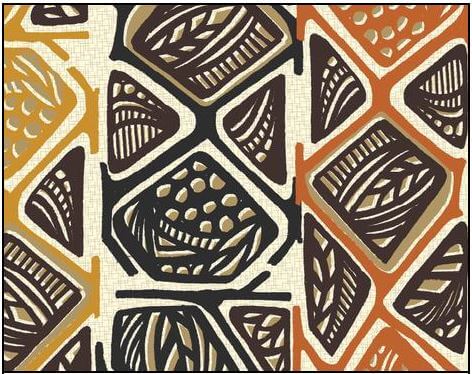
FIGURE A: Animal Tribal surface, design by Spoonflower (South Africa), 2015.
1.1.1 Analyse the use of the following elements and principles in FIGURE A above:
- Colour scheme
- Line
- Rhythm
- Positive and negative space (8)
1.1.2 Define the term African aesthetic by referring to FIGURE A above. (2) [10]
OR
1.2 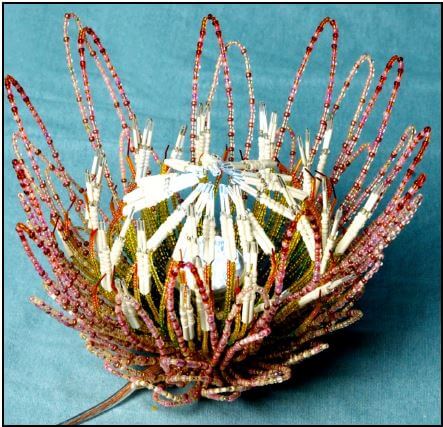
FIGURE B: One of the lamp entries for an ESKOM lamp competition called Where Creativity Meets Technology,
designer unknown (South Africa), 2014.
1.2.1 Analyse the use of the following elements and principle in the product design above:
- Form
- Line
- Texture
- Balance (8)
1.2.2 Why do you think it is important that design should embrace technology? (2) [10]
QUESTION 2: COMMUNICATION THROUGH DESIGN
2.1 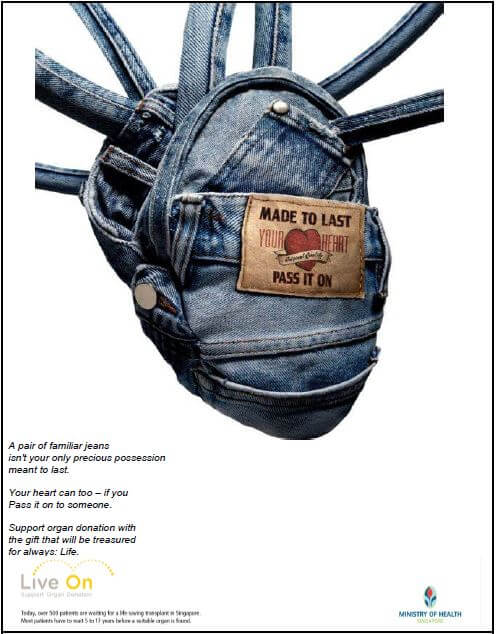
FIGURE C: Postcard design promoting organ donation, designer unknown (Singapore), 2013.
2.1.1 What do you think is the meaning of the term design activism? (2)
2.1.2 Identify and explain the symbolism highlighted in the message in FIGURE C above. (4)
2.2 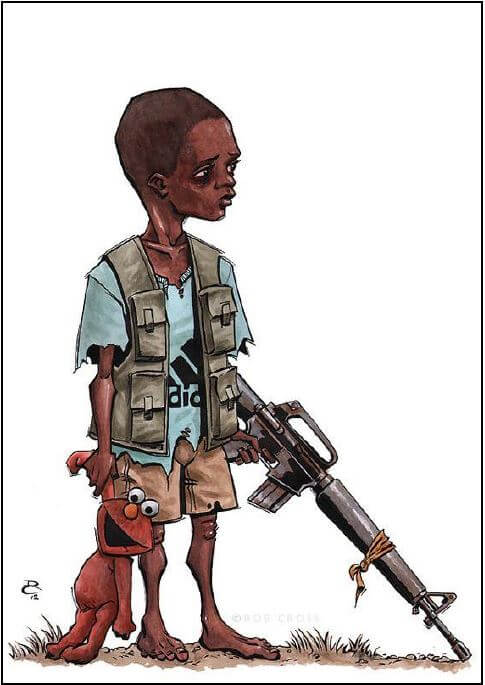
FIGURE D: Child Soldiers Campaign by Crimson Magpie (United Kingdom), 2013.
Name and explain the possible meaning of TWO symbols, evident in FIGURE D above. (4) [10]
QUESTION 3
ANSWER EITHER QUESTION 3.1 OR QUESTION 3.2.
3.1 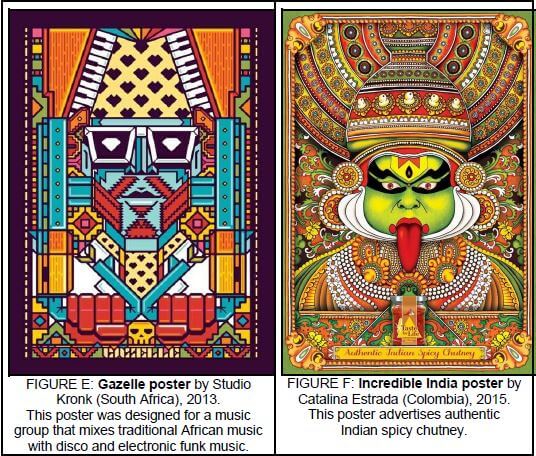
Write an essay of at least 200–250 words (one page) in which you compare the surface design in FIGURE E with the surface design in FIGURE F.
Refer to the following:
- Inspiration/Influences
- Target market
- Pattern
- Colour
- Focal point [10]
OR
3.2 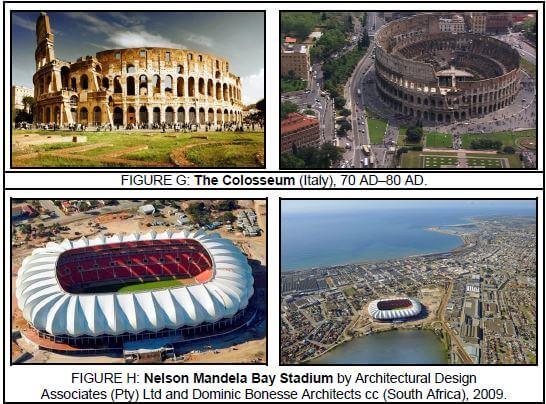
Write an essay of at least 200–250 words (one page) in which you compare the classical building in FIGURE G with the contemporary building in FIGURE H. Alternatively, you may compare any Classical building you have studied with any contemporary building.
Refer to the following in your essay:
- Function
- Design/Structure
- Building materials
- Site
- Influences [10]
TOTAL SECTION A: 30
SECTION B: DESIGN HISTORY
QUESTION 4
4.1
Design is heavily influenced by the social and political landscape of the time period in which it is made. |
Choose any TWO design movements/styles in the list below and write an essay of at least 400–450 words (two pages) in which you justify the statement above. Refer to the aims, characteristics and influences of the design movements/styles to support your answer.
Discuss at least ONE work by ONE designer from EACH movement to motivate your answer.
- Ancient Greece
- Gothic
- Renaissance
- Neoclassical
- Arts and Crafts
- Art Nouveau
- De Stijl
- Bauhaus
- Art Deco
- Modernism
- Pop
- Postmodernism
- Deconstructivism (20)
4.2 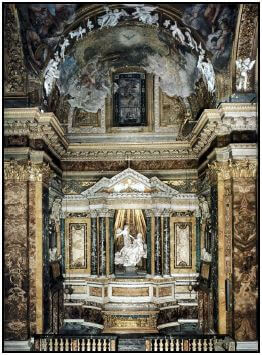
FIGURE I: Italian Baroque interior, Cornaro Chapel by Bernini
inside the Santa Maria della Vittoria church (Rome, Italy), 1652. 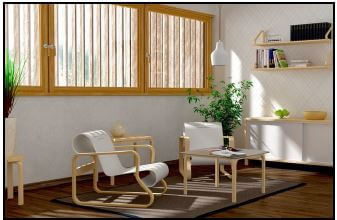
FIGURE J: Scandinavian interior with Paimio chairs
by Alvar Aalto (Finland), circa 1959.
Write an essay of at least 200–250 words (one page) in which you compare the style of Baroque and Scandinavian design, with reference to the interior designs in FIGURE I and FIGURE J above. (10)
TOTAL SECTION B: 30
SECTION C: DESIGN IN A SOCIOCULTURAL/ENVIRONMENTAL AND SUSTAINABLE CONTEXT
QUESTION 5
ANSWER EITHER QUESTION 5.1 OR QUESTION 5.2.
5.1 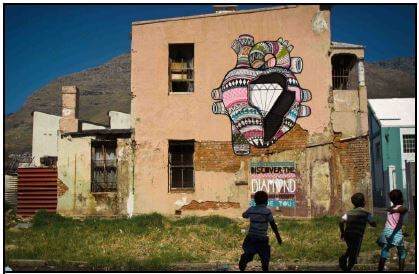
FIGURE K: Discover the Diamond Inside You, a section of the 'Diamond Inside'
mural series produced by a local community in collaboration with the Spanish
Boa Mistura Street Art Collective (Cape Town), 2012.
5.1.1 Discuss the term sociocultural design with reference to FIGURE K. (6)
5.1.2 Write TWO separate essays of 200–250 words (one page) EACH in which you discuss the work of ONE South African contemporary designer/design group AND ONE international contemporary designer/design group who address sociocultural issues in their work.
Refer to the following in your essays:
- Name of the designer/design group and ONE design that addresses socio-cultural issues
- A discussion of the aims, materials and techniques of this designer/design group, explaining how his/her/their work address social concerns
- A discussion and analysis of ONE work by the designer/design group to motivate your statements
You may NOT refer to any designer(s)/design group(s) that you have discussed previously or design examples referred to in this question paper. (14) [20]
OR
5.2 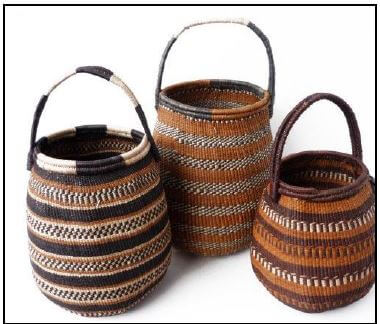
FIGURE L: Laundry Baskets by Design Afrika, South Africa, 2015.
5.2.1 In order to survive, traditional crafts need to adapt to contemporary demands. Do you agree with the statement? Substantiate your answer. (4)
5.2.2 Write an article for your community newspaper, promoting ONE indigenous African traditional craft you have studied this year. In your article, discuss the following:
- A description and analysis of ONE example and give the name of the crafter or the indigenous cultural community that produced it
- Materials, methods and processes
- Possible functions of the craft (6)
5.2.3 Write an essay of approximately 200–250 words (one page) on any ONE South African or African contemporary designer/design group whose work reflects the influence of traditional techniques and/or materials.
Refer to the following in your discussion:
- Name the designer/design group and ONE or more of his/her/their works
- His/Her/Their aims and works, explaining how the use of traditional materials and techniques is reflected in the work
- The relevance of the application of traditional materials and techniques to contemporary design
You may NOT refer to any designer(s)/design group(s) that you have discussed previously or design examples used in this question paper. (10) [20]
QUESTION 6 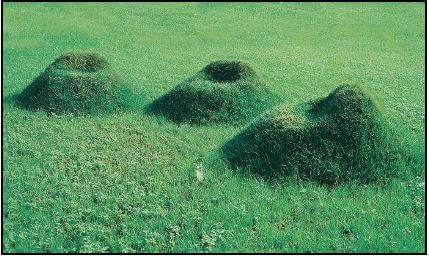
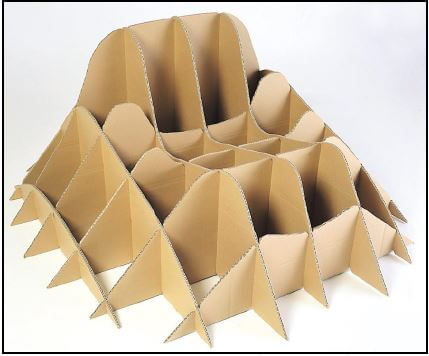
FIGURE M: Grass Covered Chair by Studio Nucleo (Italy), 2000.
A grass-covered chair, made with a cardboard frame, is piled with clay and soil and then covered with a thin layer of sand and grass seeds. |
6.1 Briefly explain the term biodegradable. Refer to FIGURE M in your answer. 6.1 (3)
6.2 Discuss the economic and social benefits of sustainable design. (3)
6.3 Write an essay of at least 350–400 words (one and a half pages) in which you discuss the work of ONE South African contemporary environmentally conscious designer/design agency/studio AND ONE international contemporary environmentally conscious designer/design agency/studio.
Refer to the following in your essay:
- Name of the designer/design agency/studio and ONE work of the designer/design agency/studio
- A brief description and analysis of the product
- The aims, materials and inspirations/influences of the product
- Refer to how the product highlights environmental concerns
You may NOT refer to any designer(s)/design group(s) that you have discussed previously or design examples used in this question paper. (14) [20]
TOTAL SECTION C: 40
GRAND TOTAL: 100